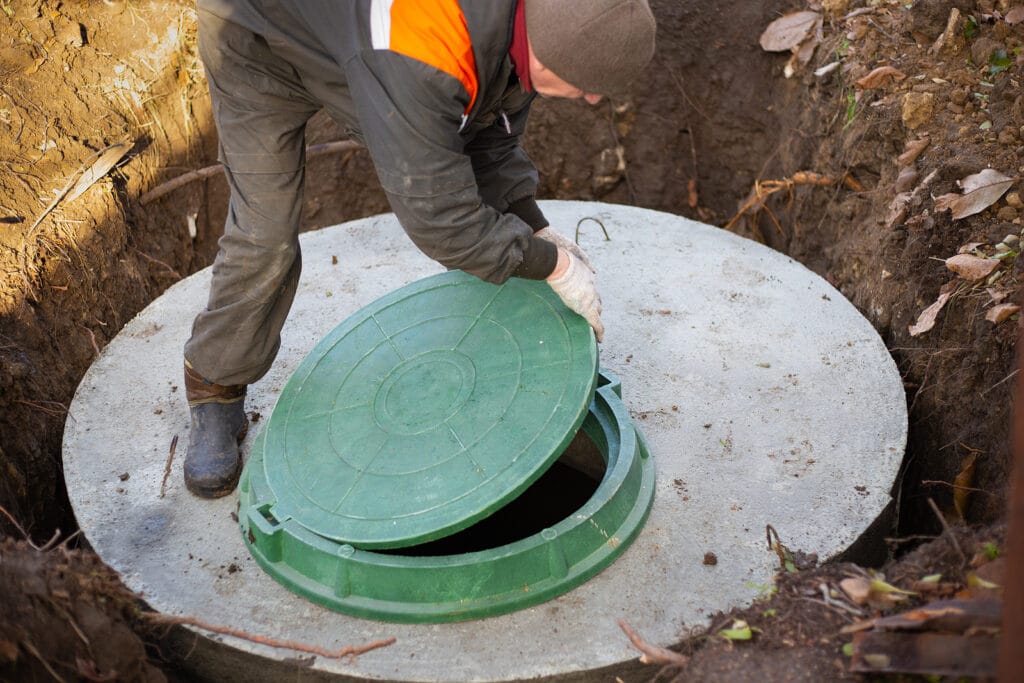Certain aspects of home ownership are buried until they need attention. Septic systems are one of those essential, but often neglected components in a home. We tend to ignore it and assume that it can perform its functions without any worry or maintenance. Septic tanks, as with all systems, have a limited life span and need to be replaced in the near future.

Unprepared homeowners may be unable to pay for the expense of a new septic system. The total cost is determined by many variables, and it’s essential to budget for a new system.
To figure out the actual cost of a new septic system, it is important to take a look at more than the price. It’s not simply about removing the tank that was in use and installing another one. There are many different components and services factor into the overall cost. From obtaining permits and hiring experts to the actual construction and excavation, each step incurs costs that homeowners must be aware of to budget effectively.
The cost of replacing the system of septic, which includes installation costs for the leach field as well as it’s septic system in general is an important aspect. The price of new tank is subject to a wide range of variations based on the dimensions and material of the tank and also the complexity of installation. The cost can also be affected by the site of the property, local laws, and soil conditions. It’s crucial to consult with experts from the septic system who can analyze your particular requirements and provide an accurate estimate. Experts will take into consideration aspects like the size and shape of the leach fields to provide an accurate estimation of your total costs of your septic system.
Apart from the tank, another substantial expense is the leachfield or drainfield. This component is crucial for the treatment and distribution of the wastewater. The replacement of a damaged, or failing leach field needs careful planning and has a significant impact on the total cost of replacing septic. Leachfield size, the soil composition, and accessibility are a few factors that can affect the price.
The homeowners must take into consideration the expenses for replacing the tank for septic. The process can disrupt your day-to-day routine, requiring you to temporarily vacate your house or reduce water usage during the installation. Be aware of the inconveniences that could arise during your project, as they could affect your daily routine and create additional costs, such as accommodations or adjustments to your routine.
It is important to understand that proper maintenance and treatment of septic systems is necessary to extend their lifespan and lower the likelihood of replacement that is premature. Inattention to maintenance can result in bigger issues in the future, like damage to the drainfield or malfunction of the tank. The inclusion of septic system maintenance expenses into your budget is a smart investment that will save you money over the long term.
By now, you may have realized that determining the septic replacement cost is not a straightforward task. It involves careful consideration of a variety of factors, from the dimensions and materials of the tank to the complexity of the installation as well as the condition of the leach field. In addition, the place of your home and local rules can affect the overall cost. To accurately calculate the price, it’s essential to talk with experts that are skilled in septic system replacement.
If you’re thinking about replacing your septic system, you may be shocked to find out there’s hidden expenses that you may not have expected. The cost can quickly mount up, and you must be aware before making any decision.
The hidden costs of septic system replacement include:
The costs of inspections and permits. Before you begin work on the replacement of your septic tank, you’ll require permits from your local authorities. These permits are expensive and it is possible that you will have to pay for inspections.
The cost of excavation and removal. Before the new system is installed, it will be required to take down and excavate the old system. This could be an extremely expensive undertaking, especially in the event that it is difficult for the user to access the old system.
The price for backfilling and gradeing. Once the old system has been taken out, the hole has to be refilled and graded. This will ensure that your new system drains properly.
The cost of landscaping. Once the new system has been installed, you might need to create some landscaping in order to make your area appear neat and tidy. It can be costly especially if a landscaper is needed.
When budgeting to replace your tank for septic, it is essential to consider these hidden costs. This will prevent any unpleasant surprises.
The eco-friendly solutions are an excellent option for budget-conscious homeowners. The eco-friendly solutions for septic are not just economical alternatives to conventional systems, they also help to protect the environment through reducing runoff and water pollution. Eco-friendly systems for septic are becoming less expensive and more accessible and are an ideal choice for those trying to reduce the environmental impact of their house without being a financial burden. Although there are some cost-related initial expenses associated with converting to an eco-friendly solution, the savings over time will more than make up for these. Green living is not only a trend, it’s an important lifestyle choice that anyone who they want to ensure the sustainability of our planet. When you install the correct technology, you can guarantee that your home will run efficiently, effectively, and with low maintenance costs.